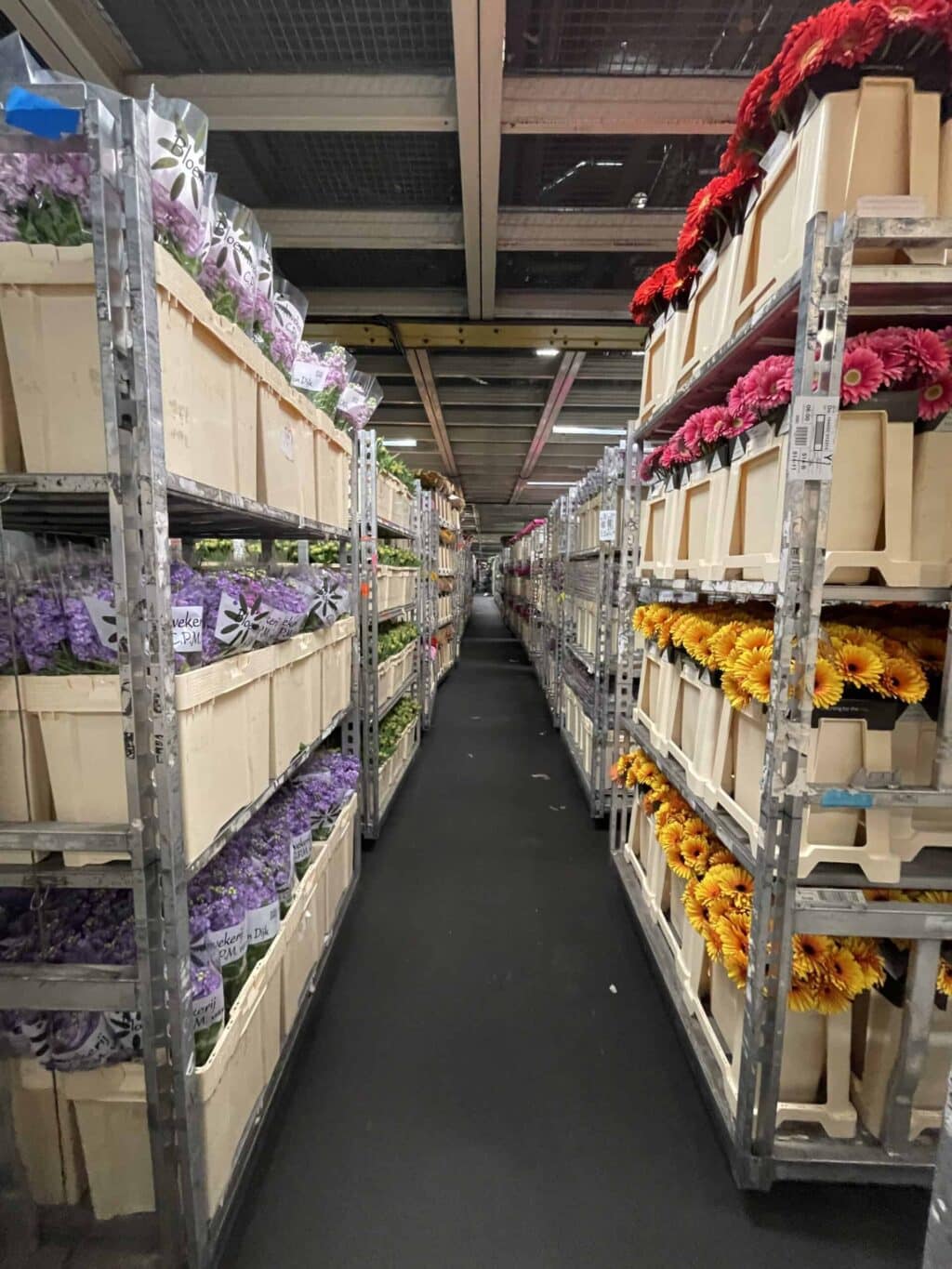

Everyone in the Netherlands is familiar with it: the flower auction in Aalsmeer. The official name is Royal FloraHolland Aalsmeer. What most people don’t know, however, is that there are multiple flower auctions in the Netherlands. In addition to Aalsmeer, there are auctions in Naaldwijk, Eelde, and Rijnsburg, all owned by Royal FloraHolland.
Aalsmeer is so well-known due to its enormous size. With over 750,000 square meters, Royal FloraHolland Aalsmeer is as big as 200 football fields combined. Because of its scale, there are numerous bicycles on the premises to help employees cover long distances efficiently.
Every day, more than 100,000 transactions take place at the auction. That’s an incredible number. But do the Dutch really buy that many flowers? The answer is no—it would be impossible. Royal FloraHolland Aalsmeer is primarily an export auction, with the largest export destinations being Germany, the United Kingdom, France, Italy, and Belgium. A significant portion of the flowers sold in flower stalls worldwide were auctioned at Aalsmeer.
How exactly does the auction process work? In the past, all traders sat together in a large room while flowers were brought in on carts. The price would start very high and quickly decrease. The trader who pressed their button first would buy the flowers at that price. It’s a true trading game—press too early, and you might overpay and lose your profit margin; wait too long, and another trader might beat you to it.
Today, everything is digital. The night before the auction, traders can purchase flowers at a fixed price. This ensures that they secure the flowers they need without having to wait until the morning auction. However, pre-purchase prices are often slightly higher because of the guaranteed availability.
The actual clock auction begins at 6:00 AM the following morning. Traders no longer gather in a single room but instead participate digitally from their computers. There are 35 auction clocks to handle the vast volume of trades. If all flowers were auctioned on a single clock, the process would take all day.
Once again, it’s a game of supply and demand! Traders want to buy the flowers as cheaply as possible but also don’t want to risk missing out on what they need. Prices vary slightly every morning depending on the demand and availability.
Once the flowers are sold, workers transport them to the appropriate locations within the auction house. Watching this process is fascinating—employees ride small carts that weave through the space in what seems like chaos, but everything runs incredibly smoothly. Royal FloraHolland employs more than 2,600 people to make this happen.
For more information, visit the official Royal FloraHolland website.
After the traders receive their purchased carts of flowers, florists come by to collect them—just a few hours later! The florists then bring the flowers to their shops or stalls, where they are sold to customers.
So, there’s an entire process behind the bouquet you buy. And we haven’t even mentioned the journey from the grower to the flower auction! We’ll cover that in another blog, so you can continue learning about the journey your Daily Flowers bouquet has taken. Check out our news page to explore more about flowers and their entire process!
Pink botanic bliss - TikTok favorites
Choose your amount - Peony - Odile
Peony pearl dream - TikTok favorites
Baby love roses - TikTok favorites
Choose your amount - Red roses bouquet
Choose your amount - Red glitter roses
Pastel princess - TikTok favorites
Share:
From flower to bouquet
Automated flower store